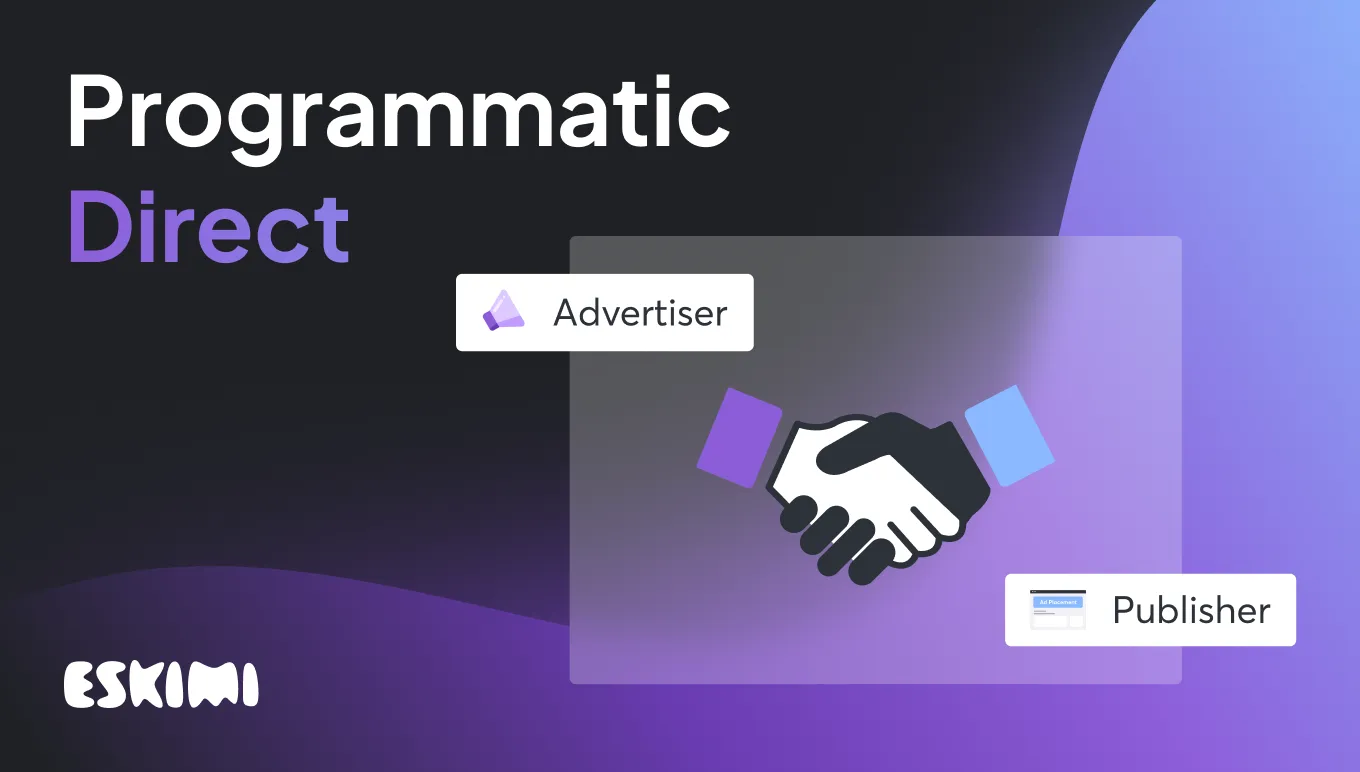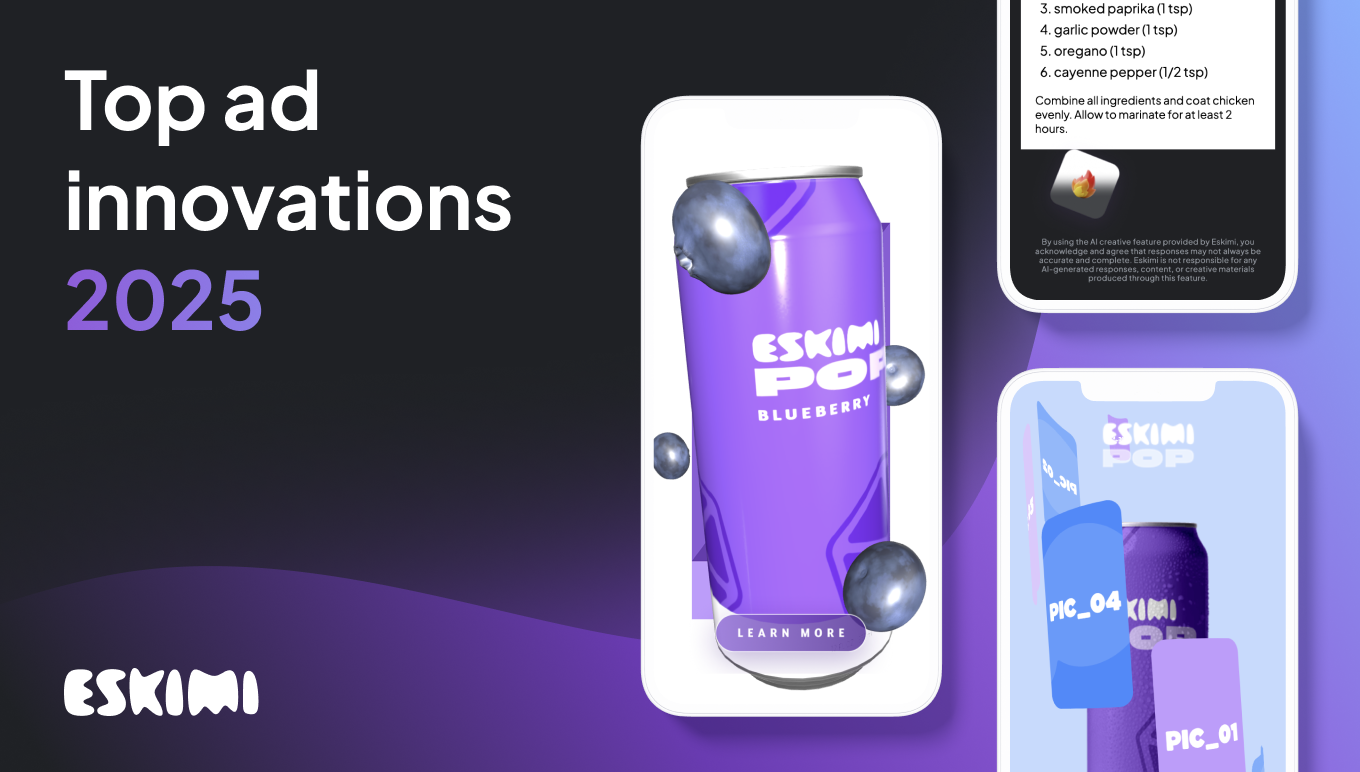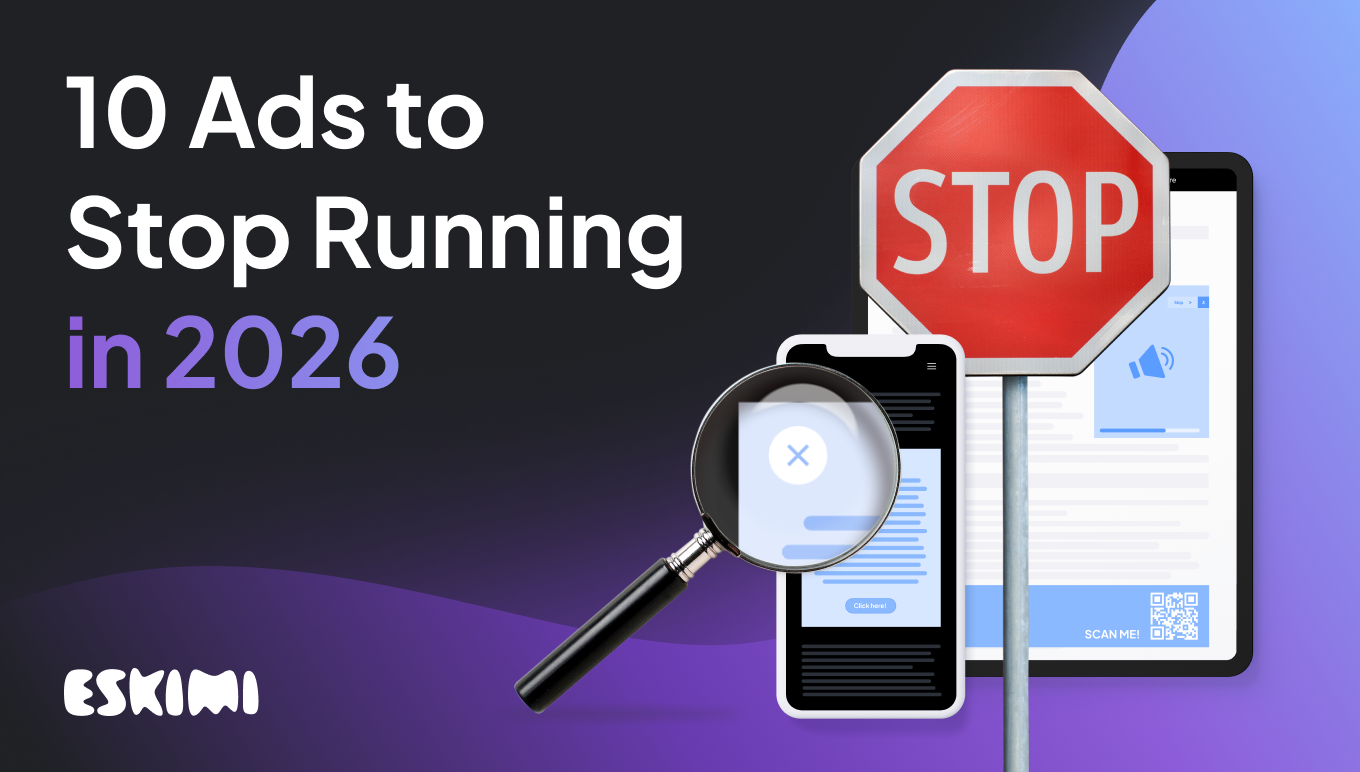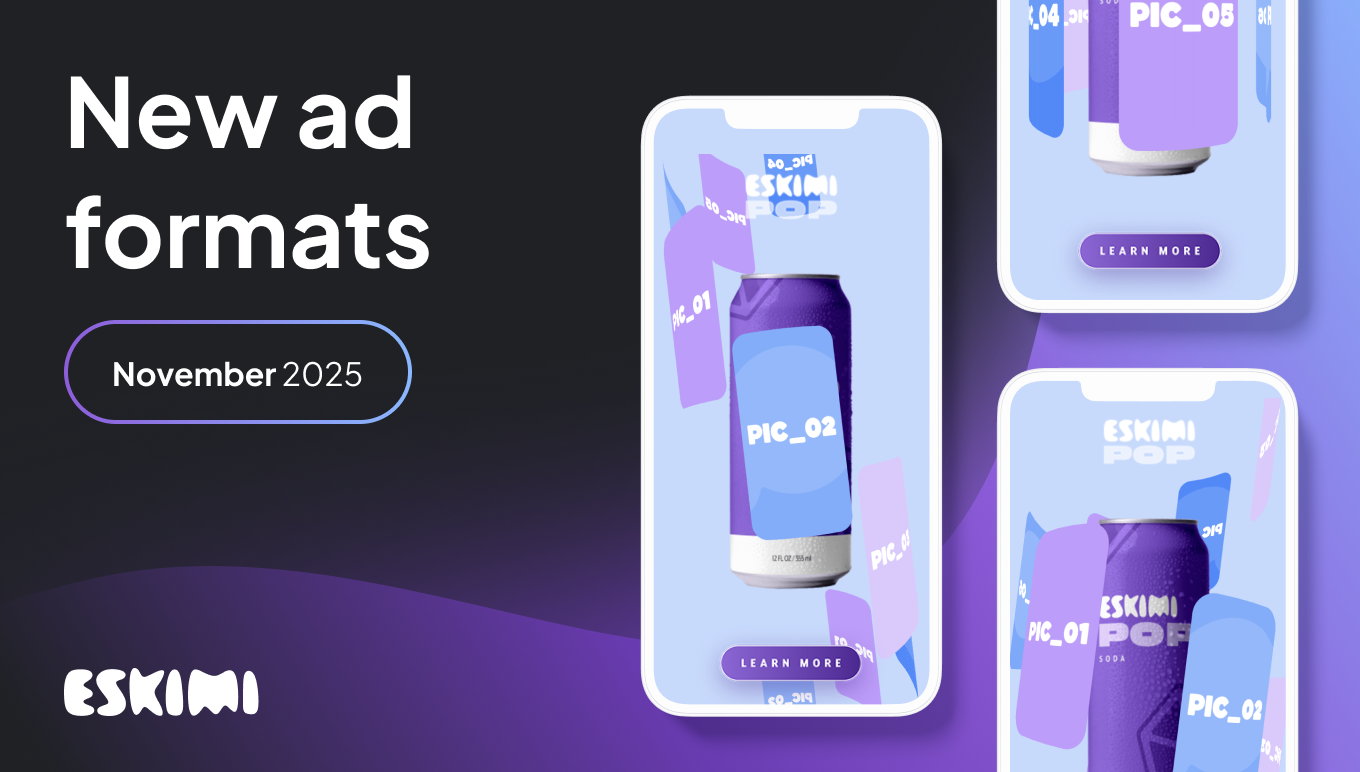Programmatic Direct: Everything You Need To Know

Global programmatic advertising spending has increased by over 305 billion US dollars in the past five years and is still expected to grow nearly 1,5 times by the end of 2026.
Clearly, programmatic advertising has gained an unstoppable momentum, tempting many marketers to add it to their advertising mix. Yet it still causes some confusion when the conversation moves past RTB, which is often used as a synonym for programmatic advertising.
The truth is there are several different types of programmatic, and it’s important for advertisers and brands to understand what each of them can bring to the table.
In this post, we’ll go through programmatic direct in particular and explain how it works, its benefits to advertisers, and how it differs from other programmatic advertising types.
What is programmatic direct?
Programmatic direct is one of the ways to purchase/sell digital ads automatically. The process involves using dedicated platforms like DSP, DMP, SSP, and others, allowing advertisers to target specific audiences and optimize their ad campaigns in real time.
The difference between programmatic direct and other programmatic advertising methods is right there in the title – in programmatic direct, the advertiser works directly with the publisher to negotiate the terms of the ad campaign and secure ad inventory on the publisher’s website or app.
Other types involve auctions and bidding on ad placements.

How does it work?
So, compared to RTB or Private Deals (PMP), programmatic direct allows advertisers and publishers to establish a direct relationship and agree on specific terms of the campaign, including prices, targeting, the format of the ad, etc.
Typically, this happens through a programmatic ad platform (DSP and/or SSP) where one of the sides can contact another and propose its offer. Then, the negotiation begins.
Once both sides reach an agreement, the ad campaign is launched and managed using software like DSP that allows the advertiser to track the performance of the ads and make adjustments as needed.
Two types of programmatic direct deals
Programmatic direct deals can be categorized into two types:
- Preferred deals
- And programmatic guaranteed
Out of four programmatic types, these two don’t work based on the auction method (either open or private).

Preferred deals
Preferred deals are direct deals between advertisers and publishers – both sides agree on specific, premium inventory for a fixed price (CPM).
Yet, in this case, the inventory isn’t reserved for a specific advertiser. Instead, advertisers can get early-bird access to their “preferred” ad placements before they go live and decide whether they want to buy it for a pre-negotiated price.
If an advertiser denies the deal, publishers can then sell this inventory on open or private (PMP) auctions, following the usual procedure (where the highest bid wins the ad placement).
Programmatic guaranteed
As opposed to preferred deals where the inventory isn’t reserved, therefore, is not guaranteed, programmatic guaranteed (as the name suggests) offers some security regarding this matter.
So, programmatic guaranteed is another exclusive type of programmatic direct where the demand and supply sides agree on a fixed price and a certain number of impressions that have to be delivered for that price. Once done, the ad inventory is designated for a particular buyer.
Programmatic guaranteed vs. preferred deals
So, both preferred deals and programmatic guaranteed fall under the umbrella of programmatic direct, which means that both sides agree on specific terms directly.
Yet what differentiates one from another is the status of ad inventory after the negotiation is complete:
- In preferred deals, it’s optional for the buyer to buy the inventory you’ve negotiated for.
- In programmatic guaranteed, the inventory is reserved (guaranteed) for the buyer, and the purchase/sale happens for sure.
How is programmatic direct different from other types?

Pros and cons of programmatic direct
For both advertisers and publishers to reach the full potential of programmatic advertising, specifically programmatic direct, it is important to get familiar with what’s best and not so good about it.
This can help decide whether or not this advertising method is right for the promoted business.
For advertisers
Pros:
- Better control over ad placements. Programmatic direct lets publishers hand-pick where they want their ads to appear and ensure they advertise on high-quality, trusted websites/apps.
- Security and guaranteed impressions. Agreeing with the deal in programmatic direct ensures advertisers a certain number of impressions at a predefined price, bringing them closer to the desired results of an ad campaign.
- Guaranteed volumes and fixed price. Since advertisers can negotiate the price with publishers, they know exactly how much they will spend on specific placements and can better organize their budget.
Cons:
- Bigger budgets. “In exchange” for being able to control the choice of placements and costs of ads, programmatic direct can require bigger budgets from advertisers.
- Not suitable for smaller advertisers. It might be more difficult for newbies or smaller advertisers to get to the high-end publishers and even launch their ads this way.
For publishers
Pros:
- Predictability and control. Programmatic direct can help publishers better plan their revenues from ad inventory and form more realistic expectations since inventory prices are fixed and not based on bidding.
- Higher rates. With programmatic direct deals, publishers can sell their premium ad inventory, therefore, get better rates.
- Transparency. Compared to auction-based deals, programmatic direct lets publishers know exactly how many impressions will be served and what ads will be shown to which audiences. As a result, they can provide a better user experience for their visitors.
- Better efficiency. Despite being made 1:1, programmatic direct deals are executed automatically via programmatic software.
Cons:
- Possibility for “leftovers." Selling ad inventory only via programmatic direct can make it more challenging to cover the entire website’s ad space, leaving some of it empty.
- Not suitable for smaller publishers. Smaller publishers that don’t have a stable amount of traffic or relevant audiences can experience struggles attracting advertisers’ attention.
Which programmatic direct deal you should use?
Setting clear goals for your programmatic advertising campaign will help you decide which deal type to use for your campaigns and when.

Programmatic guaranteed
If you want to secure a publisher’s best inventory during a specific period for a fixed price, you might want to go with programmatic guaranteed.
Example:
An automotive brand X wants to promote its goods and be associated with the upcoming Formula 1 Racing. The company wants to deliver a particular number of impressions, let’s say, 15 million, and wants its ads to appear alongside F1-related content. With programmatic guaranteed, X can purchase these particular placements and ensure the visibility of the campaign.
Preferred deals
If your campaign is more flexible and you don’t need guaranteed impressions but still seek to reach a specific target audience via top placements, preferred deals can help you meet your requirements with no upfront commitments.
Example:
A hair care brand Y launches a new shampoo for women and wants to advertise it to females aged 25-50. The brand identifies the most relevant websites and apps to reach its target audience, yet a fraction of their audience still doesn’t fall under Y’s targeting preferences. The company can then use preferred deals and only buy impressions that reach its target audience on chosen sites, and allocate the rest of the budget to other channels.
Ready, set… Go!
Programmatic advertising comes with many great opportunities to put your ads in front of the right people. Programmatic direct deals are what can help you be even more in control of this.
Now that you’re aware of the possibilities it offers, it’s time to plan your next programmatic campaign.
Not sure where to start? Contact the Eskimi team or book a demo to jumpstart your programmatic advertising strategy.
Level Up Your Advertising with Eskimi
- Reach 96% of Open Web
- 2,500+ Targeting Options
- 100% Managed or Self-Service
- In-House Creative Studio Team
- Display, Video, In-Game & CTV
- #1 Rated DSP on G2





